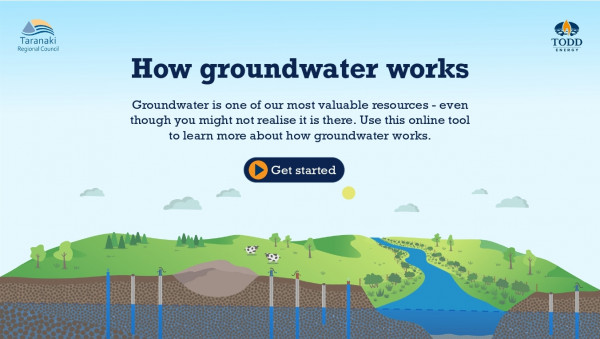Groundwater in Taranaki is generally stable, of relatively good quality and subject to low and manageable levels of demand from users.
Taranaki has five principal aquifer systems, named after the geological formations where they occur: Matemateāonga Formation, Whenuakura Formation, Marine Terrace, Tāngāhoe Formation and Taranaki Volcanics.
They are all regularly recharged thanks the region’s high rainfall. Water users favour rivers and streams over aquifers because of accessibility, cost and efficiency. So user pressure on groundwater is low and stable.
The Council monitors groundwater levels at nine sites and they have remained relatively stable for five years. Variations appear to be related to climate rather than water abstraction.
The Council also monitors groundwater’s chemical quality, nitrate levels and pesticide levels. In general, quality is good and stable, though there is evidence nitrate concentrations at sampling sites in the volcanic aquifers indicate that agriculture is having a minor effect. No pesticides have been detected in groundwater since 1998.
Groundwater
The level and composition of groundwater are monitored to ensure there is no adverse effect from human activity.
Groundwater Quantity State of the Environment Monitoring Triennial Report 2017-2020 (1.8 MB pdf) More reportsLearn all about how the groundwater system works
To learn all about how groundwater works, we have an interactive map. Click on the link below to go the learning tool:
